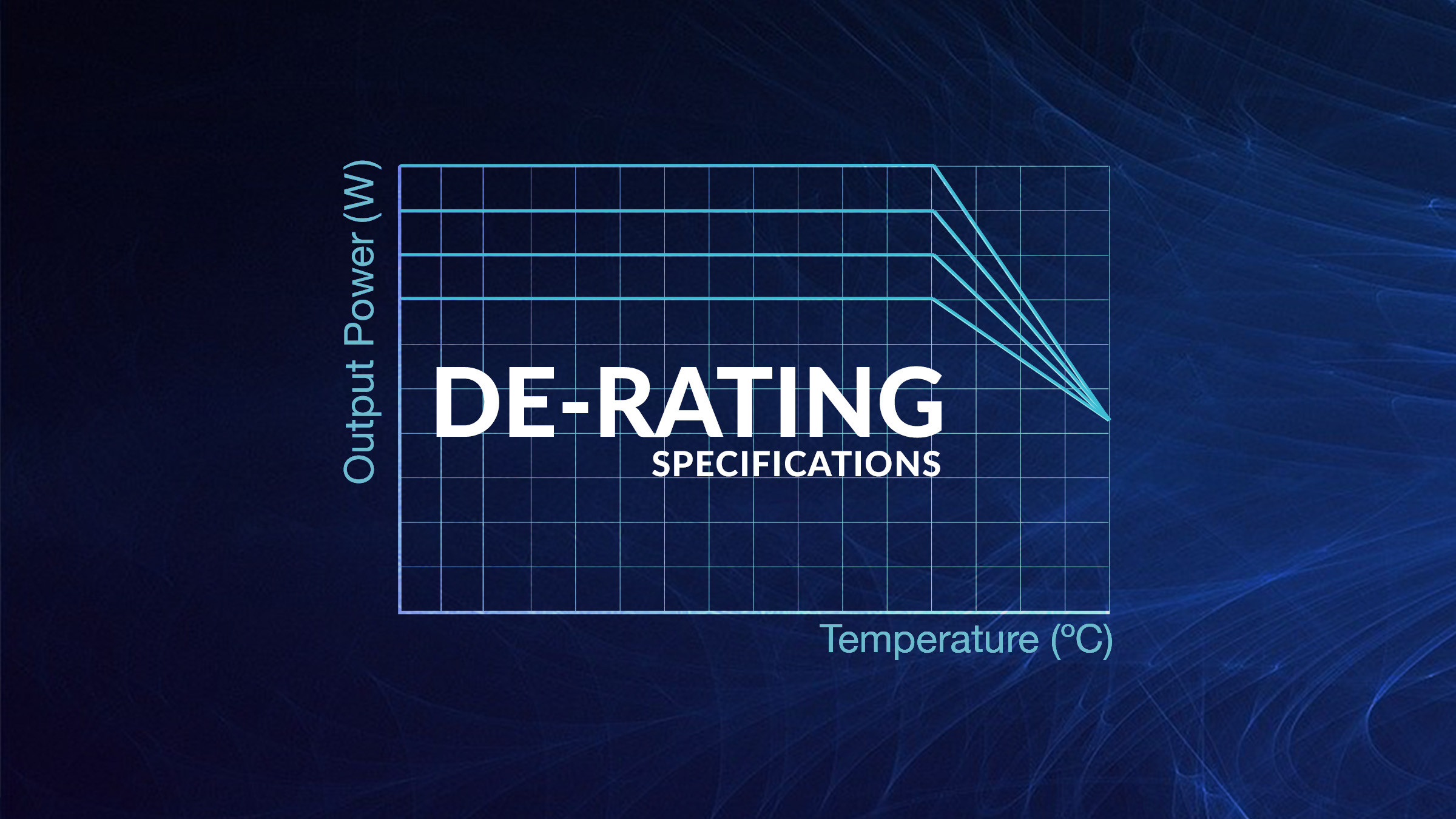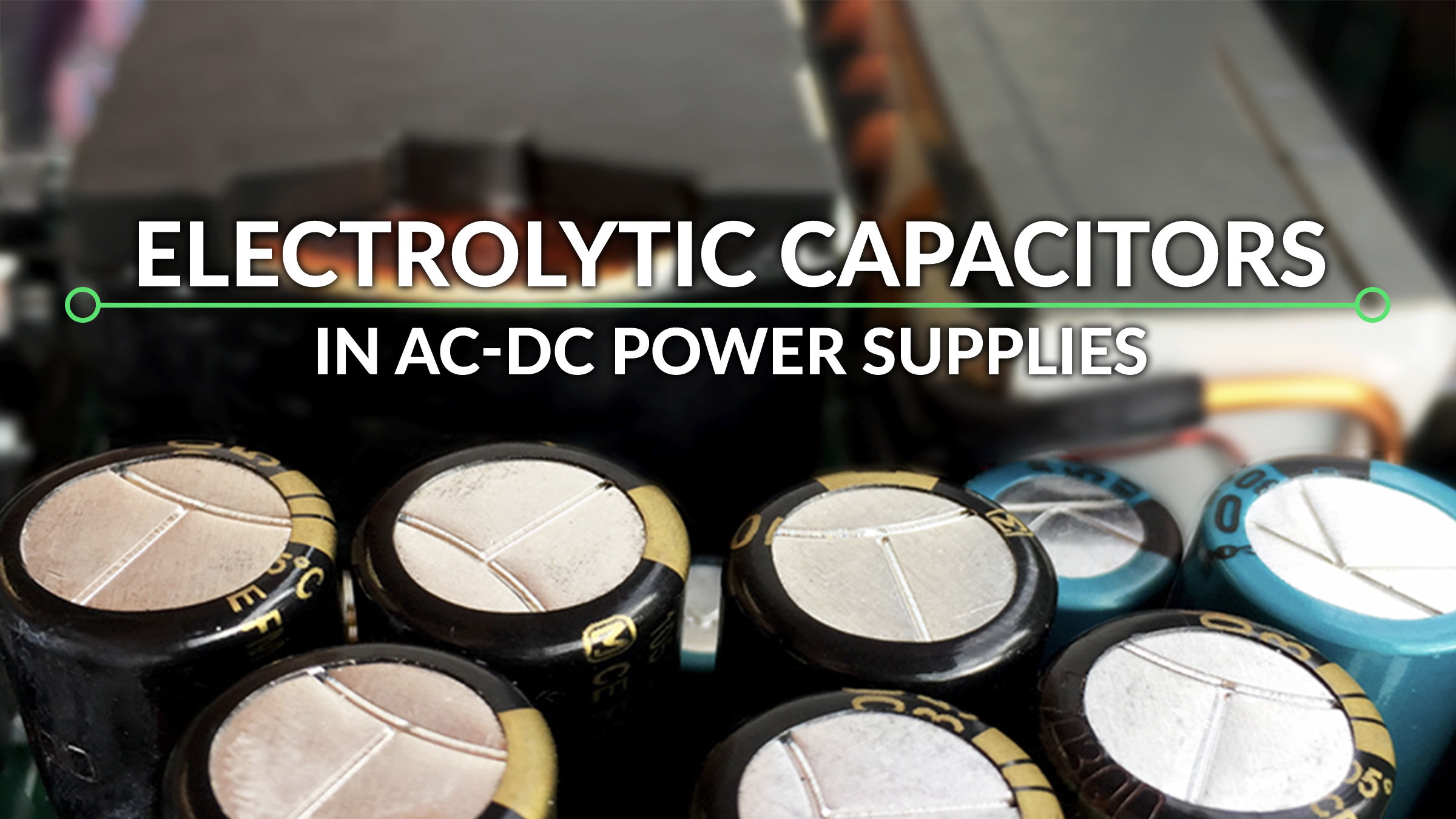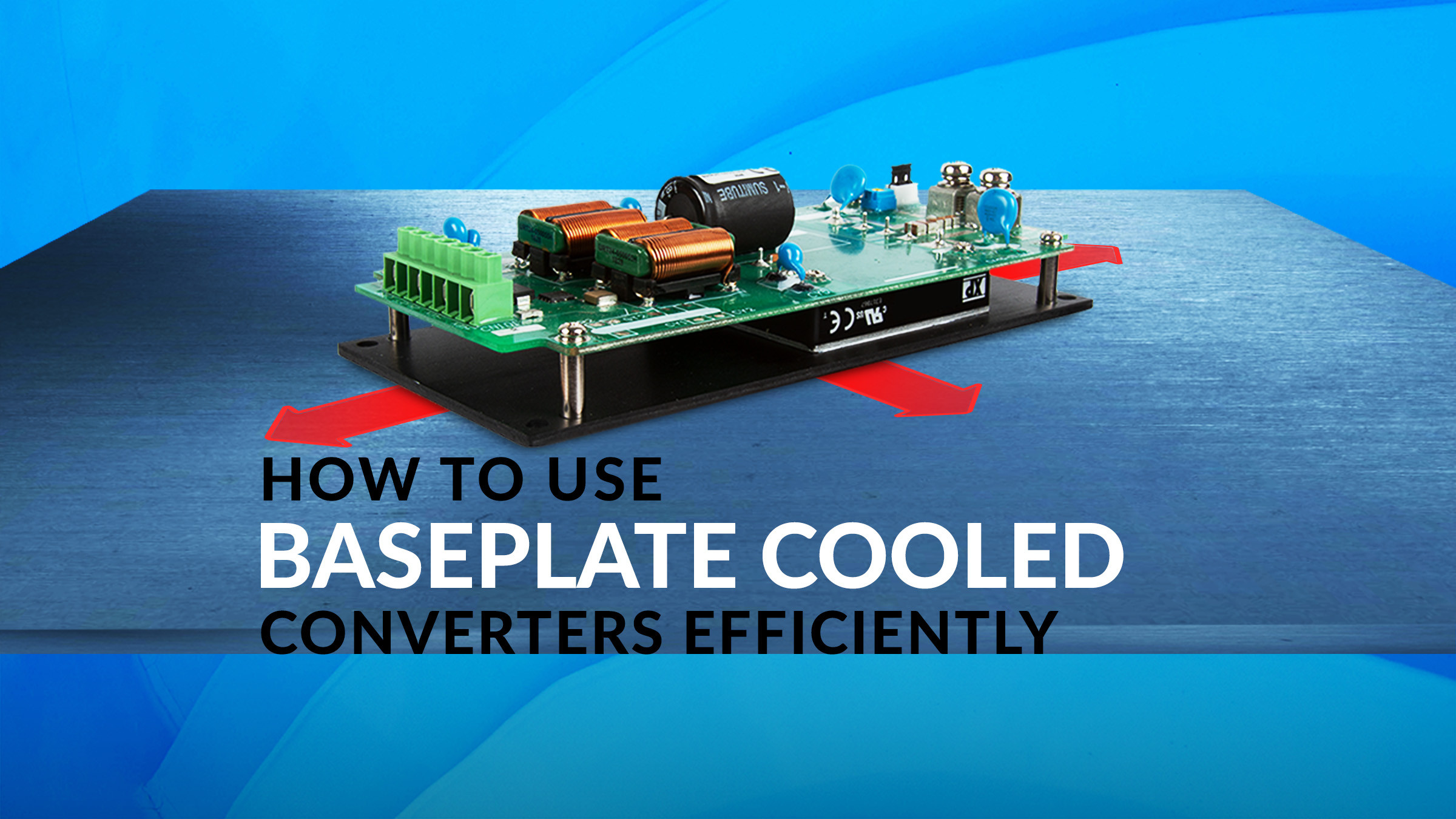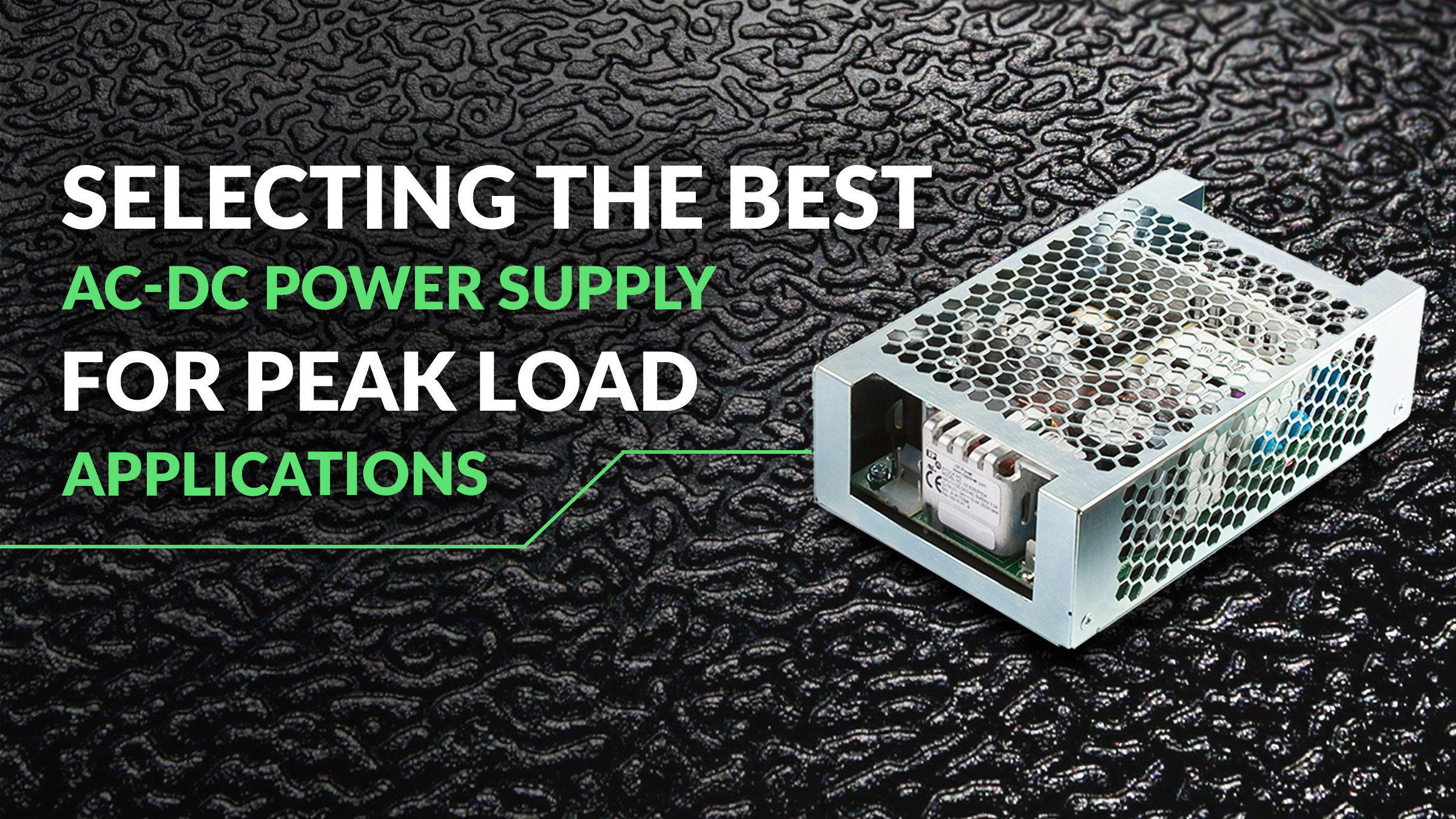
Have you considered the advantages of a dual rated product?
Overview:
- Dual rated power supplies can offer a smaller, lighter, lower-cost solution without compromising performance, reliability and service life of the end application.
- Use thermal data to select and evaluate the optimum dual rated power supply.
- Step through a calculation for an example use case.
When you need an AC-DC power supply for systems with peak load requirements that are higher than the normal power requirements for short periods, you can end up specifying a larger, higher power and higher cost product.
Common applications are in electromechanical components:
- Print heads
- Pumps
- Motors
- Drives
These are typically used in:
- Factory automation
- Medical devices
- Fluid & material handling
- Robotics
- Power tools
- Machining
- Packaging, test and dispensing systems & printers
In applications like these, the average power required is usually far lower than the peak demand. If you use a power supply with a lower continuous power rating that can support the peak load, you can specify a power supply that’s smaller, lighter and lower cost.
By evaluating the specific requirements and operating conditions carefully, you can reduce the product size and cost without compromising system reliability or lifetime. While the supply must be electrically rated to safely support the peak demand, it can be thermally rated at the lower power level.
Dual rated power supplies
Power supplies with a convection rating and a higher fan-cooled rating are often overlooked when considering peak load applications but can be a safe and reliable choice for peak load applications. Such a supply could be rated at up to 50% higher power when fan-cooled, compared to a naturally or convection cooled environment.
Dual rated products are electrically rated for the higher power rating and thermally rated for the convection cooled power rating. This is ideal for peak load applications where the peak load does not exceed the fan-cooled rating and the average load is lower than the convection rating.
In general, the larger the difference between the fan-cooled, or peak, rating and the convection rating, the shorter the peak load capability. Dual rated products normally specify a list of key components and their temperature ratings, to ensure safe and reliable operation in end applications. Use this information to ensure that the product will not overheat in a peak load application by monitoring the temperature of the key parts within the end application during the development phase.
The specification also usually outlines lifetime expectations, based on key electrolytic capacitor temperatures. Use this information to confirm the suitability of the product for your system requirements.
You can select and specify a dual rated power supply for a peak load application based on readily available thermal data. For reliable and safe selection, check that the average power requirement does not exceed the continuous convection rating of the supply and that the peak load does not exceed the maximum power rating when fan-cooled.
The key parameters are:
- Peak power required, which must not exceed the fan-cooled rating
- The maximum duration of the peak
- The duty cycle
- The power consumed by the load during the non-peak duration
- The average power drawn from the supply when the peak & normal running conditions are combined
Example: Open frame power supply parameters and calculations
An open frame power supply with a force cooled rating of 250W and a convection or naturally cooled rating of 180W, XP Power’s GCS250 series, operating in a convection cooled application requiring a peak load of 250W for ten seconds in every forty seconds - or a duty cycle of 25%.
This peak load (Ppk) requirement defines the absolute maximum power available, during the non-peak period, so that the average power does not exceed the convection cooled rating.
In this case, the maximum available power during the non-peak duration (Po) will be 156 Watts, so that the convection cooled power rating (Pav) is not exceeded.
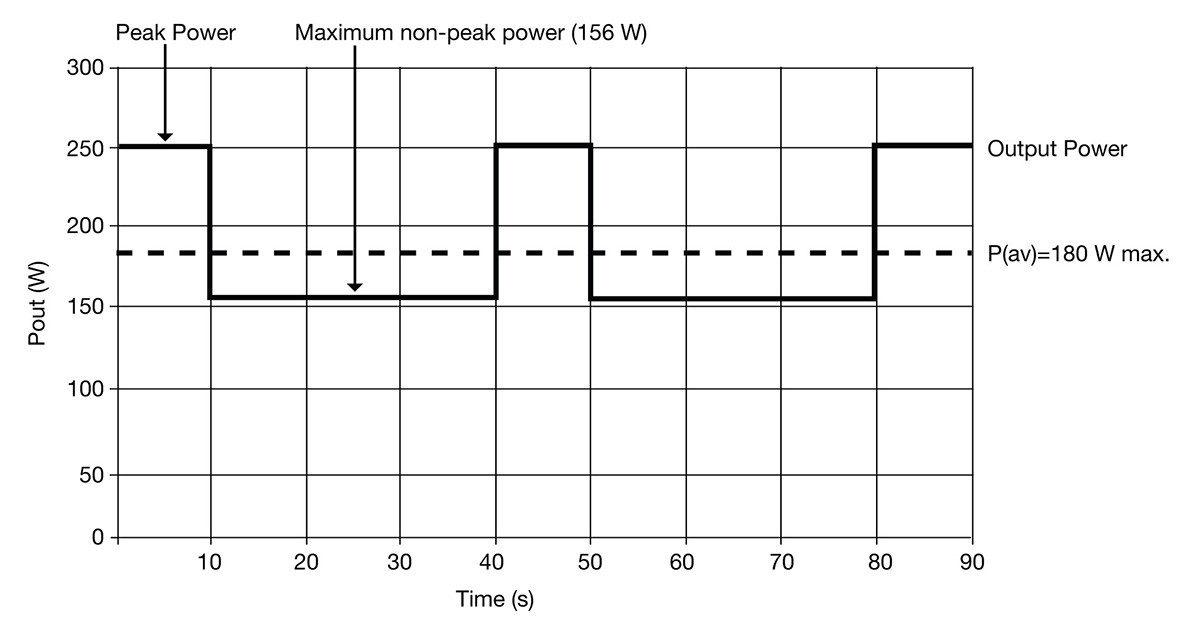
Pav = (Ppk x T1) + (Po x T2)
T1 +T2
Using the same formula, if the duty cycle is reduced 15%, or 10s in every 67s then the non-peak power can be increased to 168W without exceeding the average continuous convection power rating of 180W.
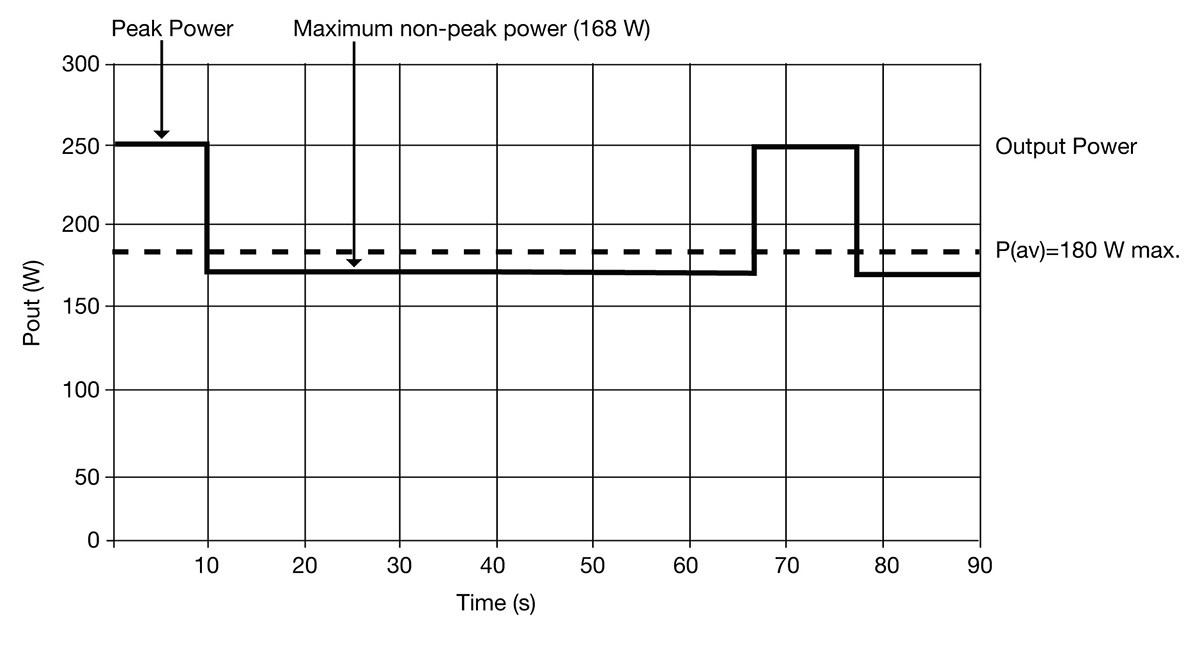
Calculations show that these operating conditions will not exceed the ratings of the power supply.
We must also consider the key component temperatures of the supply when installed in the end equipment.
The diagrams below show the maximum temperature of the components for this product, to meet safety and reliability requirements. The predicted service life of the product depends on the average capacitor operating temperature over the life of the equipment.
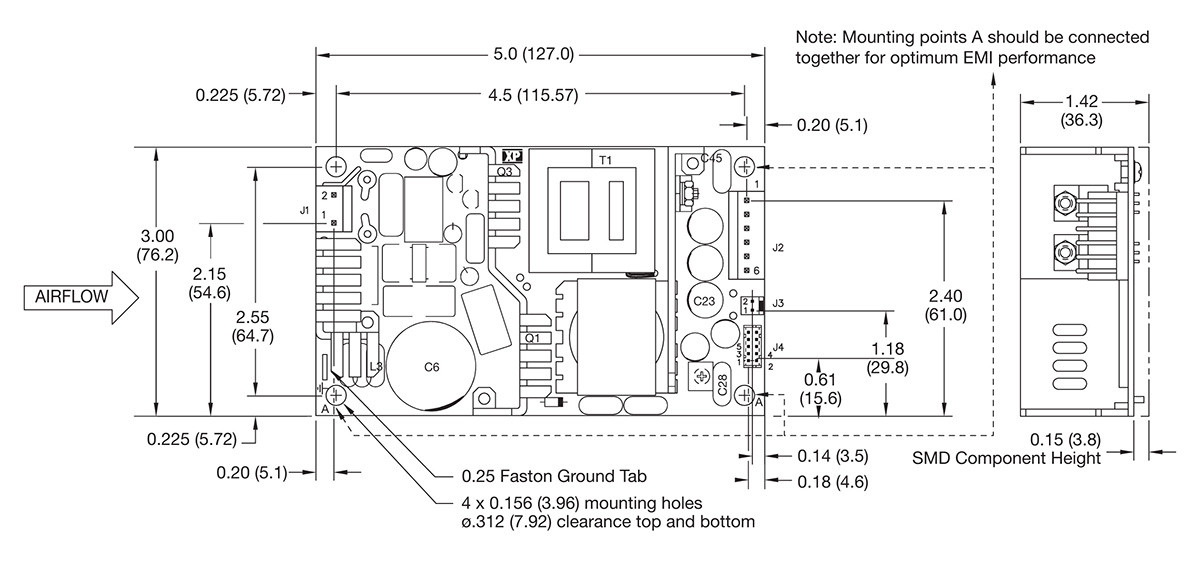
For safe operation of the PSU in the end-use equipment, the temperature of the components listed in the table below must not be exceeded. The temperature should be monitored using K type thermocouples placed on the hottest part of the component (out of any direct airflow).
See mechanical details for component locations.

The predicted service life of the power supply is dependant upon the average temperature of the key electrolytic capacitors (C6 & C23) over the mission profile of the end application based on average ambient temperature expectations and hours per year of operation.
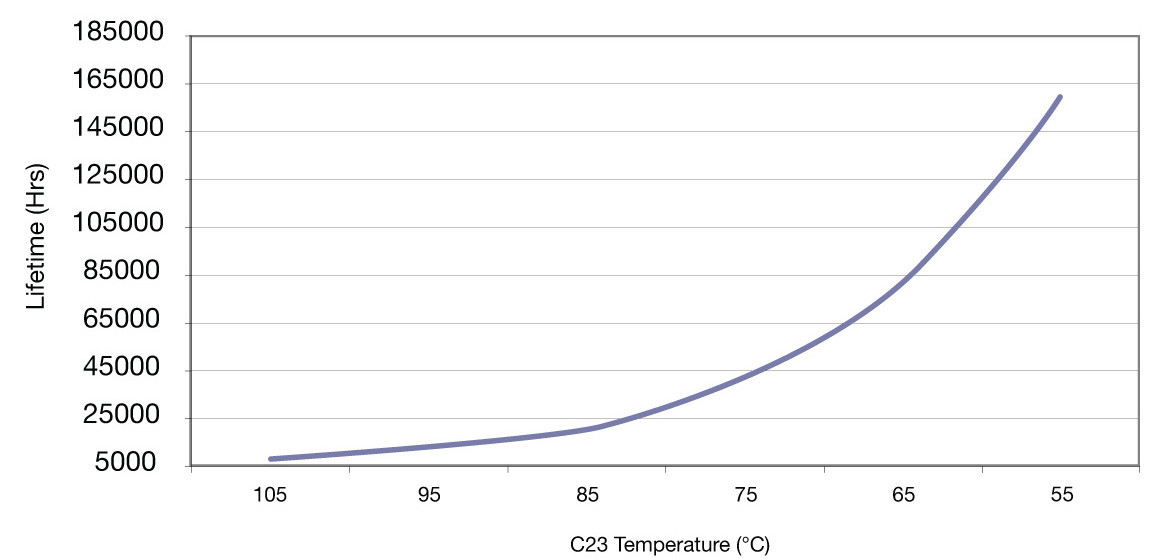
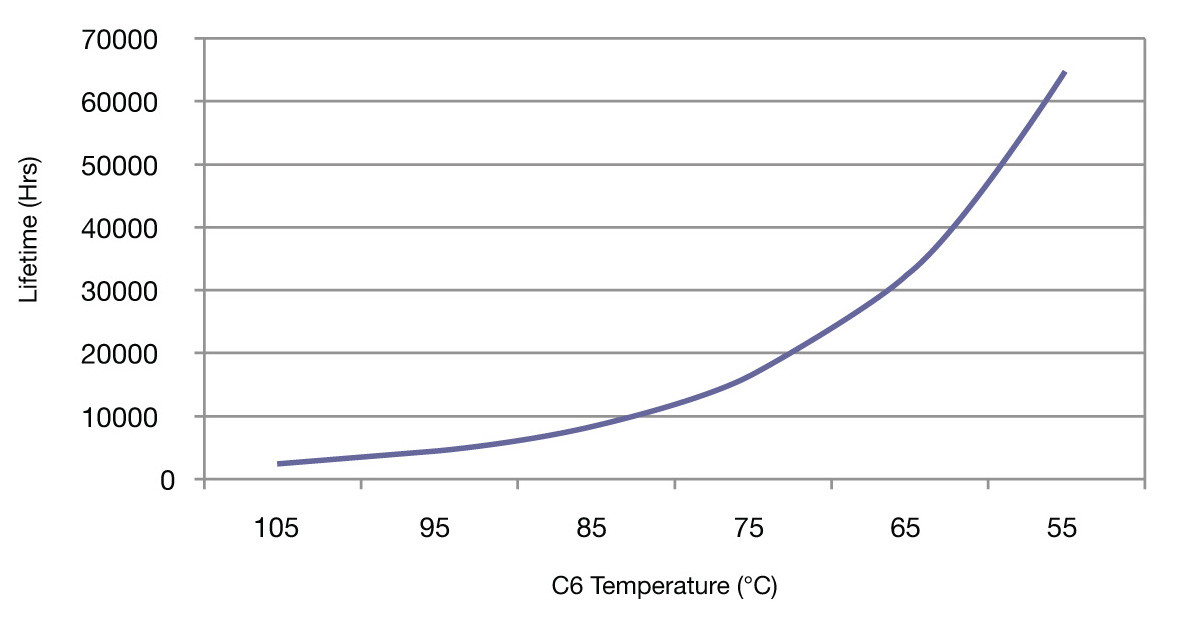
In summary, if specified correctly, dual rated power supplies perform strongly in high peak power applications providing a high performance, smaller and lower-cost power solution.
Have you got your copy of our latest AC-DC Power Supplies Selector Guide? Quick reference and easy to follow graphical overview of our market-leading AC-DC product line.





